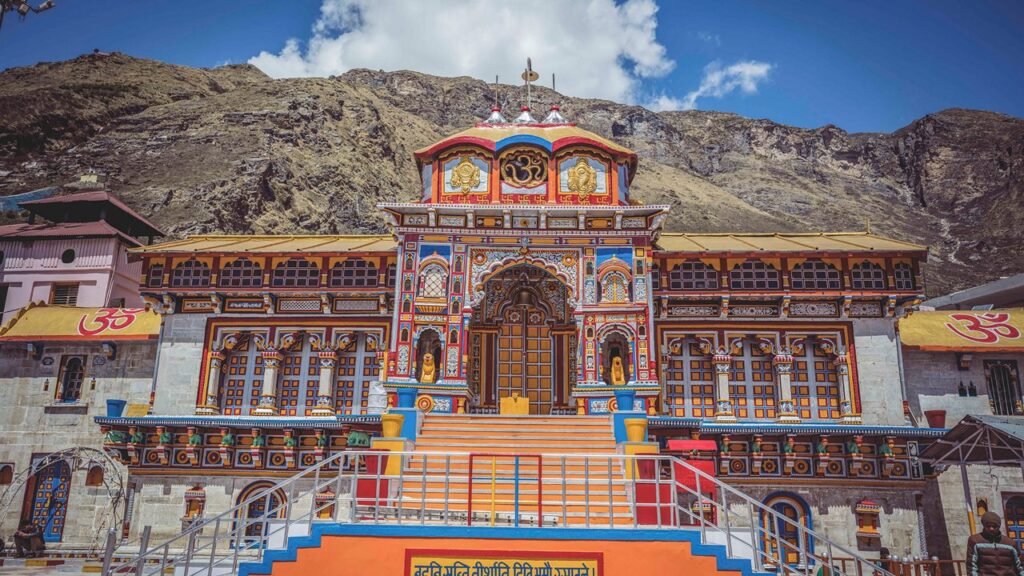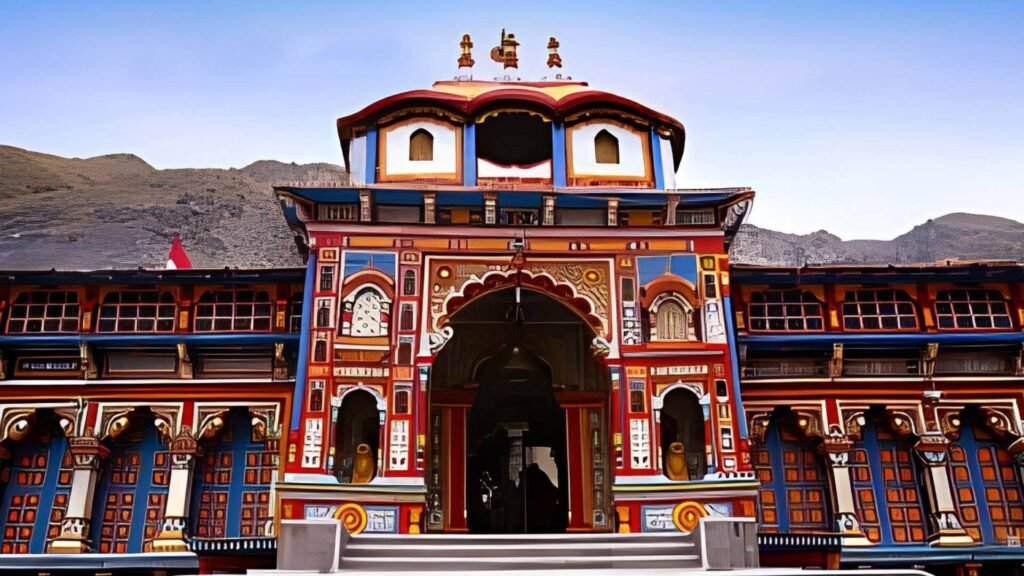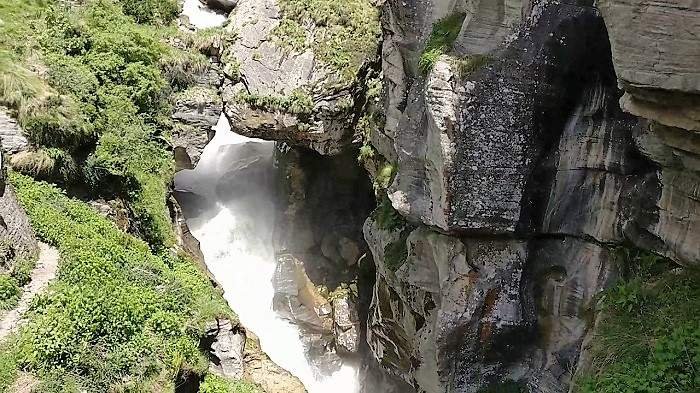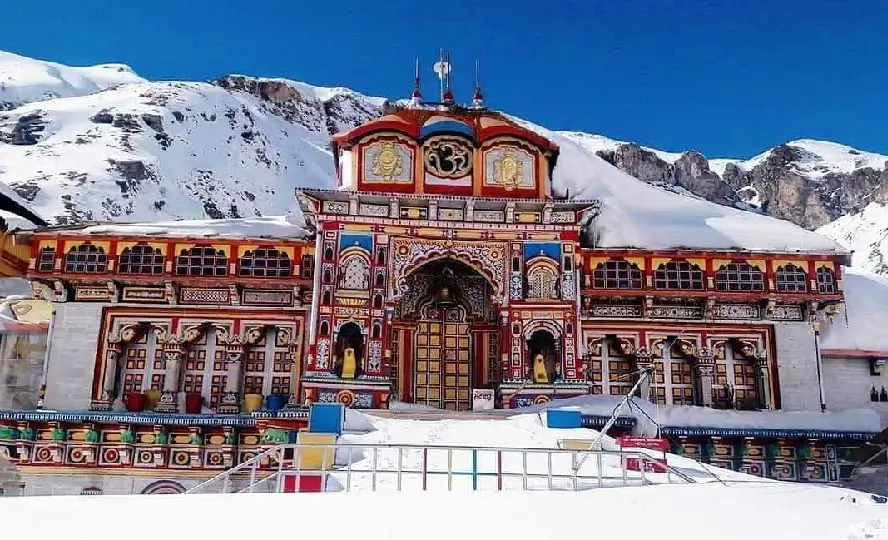
Badrinath, cradled in the serene embrace of the Nar-Narayan mountain ranges and set along the banks of the Alaknanda River, is one of the most sacred and revered pilgrimage destinations in India. Known as the holy land of Lord Vishnu, Badrinath is the fourth and final dham of the revered Char Dham Yatra and one of the 108 Divya Desams dedicated to Lord Vishnu.
At an altitude of 3,133 meters, surrounded by snow-draped Himalayan peaks and infused with spiritual energy, this is not just a place of worship—it is a divine experience steeped in faith, devotion, and the tranquil beauty of the mountains.
Mythological Significance
According to Hindu mythology, Lord Vishnu meditated in this very location in deep austerity. To protect him from the harsh weather, Goddess Lakshmi assumed the form of a Badri tree (Indian Jujube), shading him from the elements. This selfless act gave the town its name—Badrinath.
It is also believed that Nar and Narayan, twin incarnations of Lord Vishnu, performed intense penance here. Scriptures and ancient texts describe Badrinath as Vaikuntha on Earth, making it a vital pilgrimage site for those seeking moksha—liberation from the cycle of life and death.

The sacred heart of the town is the iconic Badrinath Temple, also known as Badrinarayan Mandir. Built in stone with a golden gilded roof, the temple’s vibrant façade and intricate architecture command reverence and admiration.
Inside the sanctum lies the main deity—a 1-meter tall black stone Shaligram idol of Lord Vishnu, seated in a meditative padmasana posture. The temple opens its doors to devotees around April-May (on Akshaya Tritiya) and remains accessible until November, closing after Diwali due to extreme winter conditions.
Must-Visit Places Around Badrinath

- Tapt Kund – A natural hot spring believed to have medicinal properties; pilgrims bathe here before darshan.
- Brahma Kapal – A riverside ghat where ancestral rites and pind daan rituals are performed.
- Charanpaduka – A revered rock with footprints believed to be those of Lord Vishnu.
- Mana Village – The last Indian village near the Tibet border, rich in culture and mythology.
- Vyas Gufa and Ganesh Gufa – Ancient caves where sage Vyasa is believed to have composed the Mahabharata.
- Saraswati River Origin – One of the few visible locations of this sacred river.
- Satopanth Tal Trek – A glacial lake where Brahma, Vishnu, and Shiva are believed to meditate in eternal silence.
Best Time to Visit Badrinath
- May to June: Ideal for temple visits and enjoying the scenic beauty of Badrinath.
- September to mid-November: Offers post-monsoon freshness with fewer crowds and clear skies.
- Avoid July–August: Due to the high risk of landslides and continuous rainfall.
How to Reach Badrinath
- By Air: The nearest airport is Jolly Grant Airport (Dehradun), approximately 315 km from Badrinath.
- By Rail: Closest railway stations are Rishikesh and Haridwar.
- By Road: Badrinath is well-connected via Joshimath, Chamoli, and Rishikesh. Regular bus and taxi services are available from major Uttarakhand towns and cities.
Badrinath in the Char Dham Yatra
The spiritual circuit of the Char Dham Yatra—comprising Yamunotri, Gangotri, Kedarnath, and finally Badrinath—culminates in this divine town. As the last stop of this revered yatra, Badrinath – the holy land of Lord Vishnu holds immense emotional and religious significance. Pilgrims often speak of a deep inner peace upon reaching Badrinath, as if their spiritual quest has come full circle.
Travel Tips for Pilgrims Visiting Badrinath
- Acclimatize properly before traveling due to the high altitude.
- Even in summer, carry warm clothes as temperatures drop significantly.
- Avoid single-use plastics and help preserve the pristine Himalayan environment of Badrinath.
- Make advance bookings for accommodation and transport during peak pilgrimage months.
The Majestic Badrinath Temple – A Pillar of Devotion
The Badrinath Temple, also known as Badrinarayan Mandir, stands as the spiritual and geographical heart of Badrinath – the holy land of Lord Vishnu. Perched at an altitude of 3,133 meters, this ancient temple is a shining symbol of faith, attracting lakhs of devotees and spiritual seekers every year.
Historical Background
The origins of the Badrinath Temple trace back to Adi Shankaracharya, the 8th-century philosopher and reformer who is credited with reviving Hinduism. He is said to have discovered the idol of Lord Badrinarayan in the Alaknanda River and enshrined it in a cave near Tapt Kund. Later, the idol was moved to its present location and enshrined in the grand temple we see today.
Over centuries, the temple has undergone several renovations and restorations, especially by Garhwal kings and Gorkha rulers. Despite being in a seismically active and weather-prone zone, the Badrinath Temple has withstood time as a beacon of divine presence.
Architectural Splendor
The temple is built in the traditional North Indian Nagara style, featuring:
- A conical-shaped tower (shikhara) about 15 meters tall.
- A brightly painted façade adorned with arches, intricate carvings, and symbolic motifs.
- A sanctum sanctorum (Garbhagriha), a darshan mandap (worship hall), and a sabha mandap (assembly hall).
The black stone Shaligram idol of Lord Vishnu seated in padmasana is the main attraction. He is flanked by idols of Nar and Narayan, Garuda, Kubera, Narada, and Uddhava, forming a celestial court inside the Garbhagriha.
Rituals and Worship
Daily rituals in the Badrinath Temple follow strict Vedic traditions and are performed by Namboodiri Brahmins from Kerala—a unique tradition set by Adi Shankaracharya to unify Indian spiritual practices.
The day starts with Mahabhishek (holy bath) at 4:30 AM and continues with pujas, aarti, and recitations of Vishnu Sahasranama. In the evening, devotees gather for Shayan Aarti, the ceremonial resting of the deity.
During winter, the idol of Lord Badrinath is moved to Joshimath (approximately 40 km downhill), where worship continues at Narsimha Temple.
Festivals Celebrated at Badrinath Temple

- Opening Day (Akshaya Tritiya) – Marked with grand processions, chants, and pujas. Thousands of pilgrims gather for the first darshan of the season.
- Badri-Kedar Festival – Celebrated in June, showcasing Garhwali music, dance, and culture.
- Mata Murti Ka Mela – A local festival honoring the mother of Lord Badrinath, celebrated with devotion and local rituals.
- Closing Ceremony (Bhai Dooj or Kartik Purnima) – The idol is ceremoniously taken to Joshimath as the temple shuts for winter.
Spiritual Importance
The Badrinath Temple is one of the 108 Divya Desams, considered sacred by Vaishnavites. It is also part of the Panch Badri circuit, which includes Yog Dhyan Badri, Bhavishya Badri, Adi Badri, and Vriddha Badri—each representing different forms and legends of Vishnu.
Pilgrims believe that a visit to Badrinath Temple washes away sins, grants divine blessings, and brings one closer to moksha. The sheer aura of the deity, the hymns echoing in the mountains, and the sight of the temple against the snowy backdrop is said to awaken the soul.
Conclusion
Badrinath is more than a destination—it is a sacred doorway to the divine. From the soul-soothing chants at the temple to the surreal beauty of the Alaknanda Valley, every element of temple speaks of timeless devotion and natural grace. Whether you’re a pilgrim, a trekker, or a seeker of peace, your journey to Badrinath – the holy land of Lord Vishnu will remain etched in your heart forever.